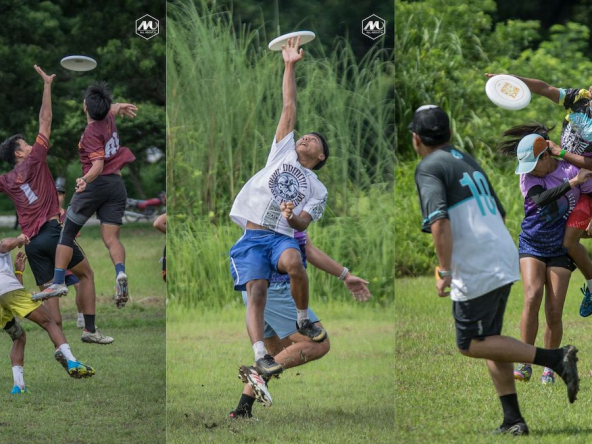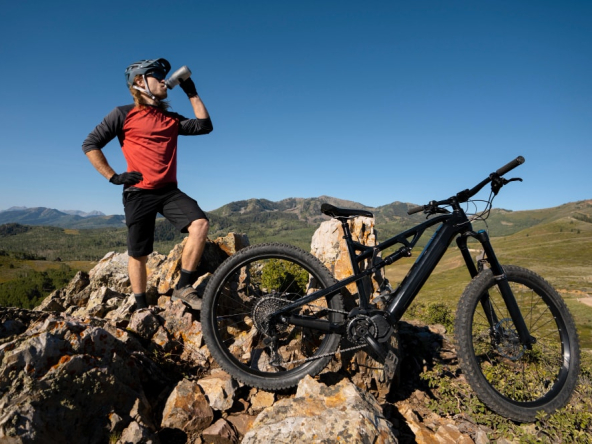Summer is a season of sun, fun, and the thrill of outdoor adventures. One of the most memorable milestones for many kids during these days off school is learning how to ride a bike.
Whether it’s cruising around your village streets or zipping through local parks, biking has long been a cherished pastime that connects generations.
For parents, teaching your child to ride a bike is more than just a rite of passage—it’s about building confidence, encouraging independence, and sharing unforgettable moments.
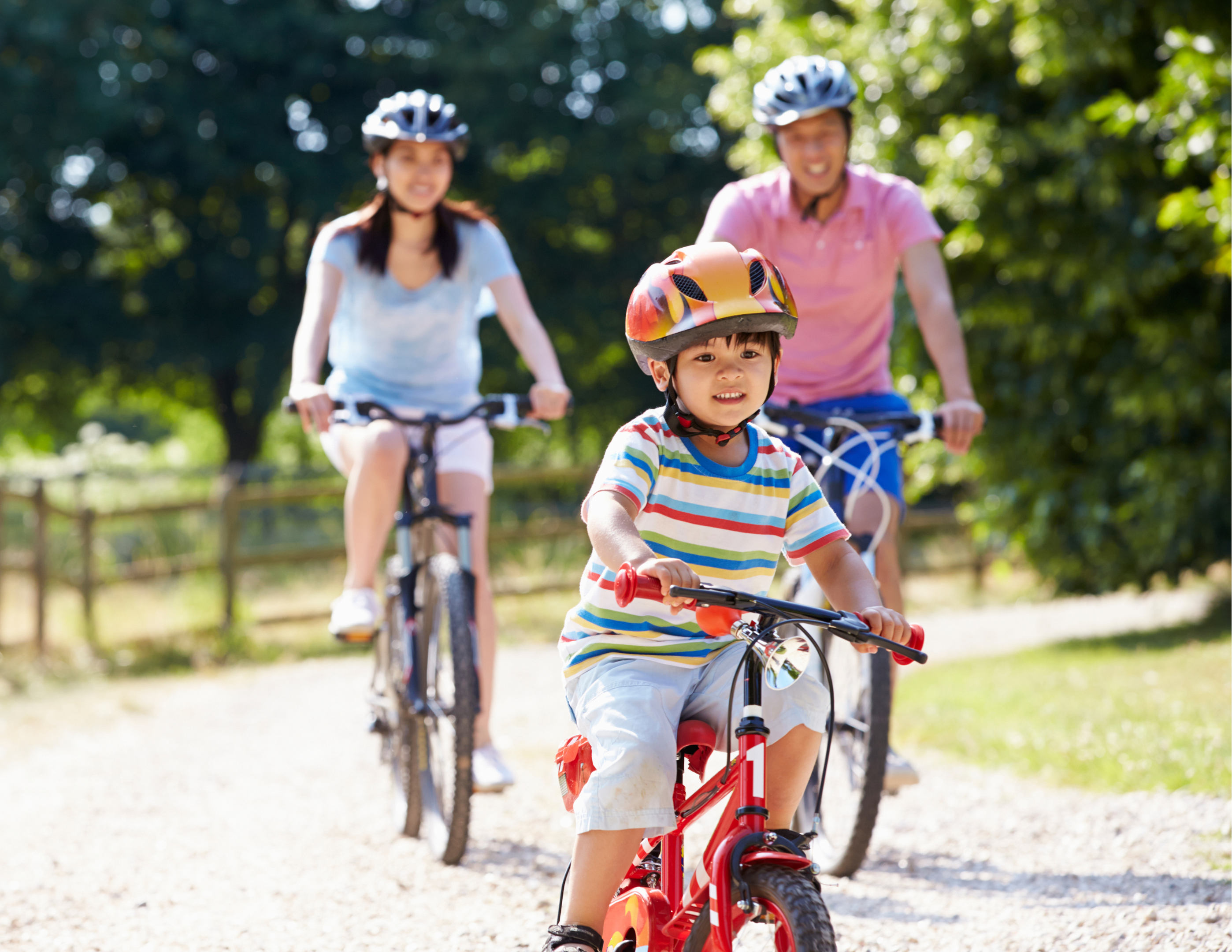
The Benefits of Bike Riding for Kids
Biking offers more than just fun—it’s an important skill that promotes physical, mental, and emotional well-being. Here are just a few benefits of why you should teach your child to ride a bike:
Physical Fitness
Using a pedal bike strengthens the legs, improves cardiovascular health, and enhances coordination.
Mental Health
Outdoor activities like cycling reduce stress and boost mood.
Confidence and Independence
Mastering a two-wheeled bike empowers kids and fosters a sense of achievement.
Social Skills
Joining neighborhood rides or weekend family bike trips builds friendships and teamwork.
Environmental Awareness
Encouraging kids to ride a bike instead of cars introduces them to eco-friendly habits early in life.
A Step-by-Step Guide to Teaching Children to Ride Bikes
Successfully teaching a child to ride involves more than just balancing and pedaling. It’s a whole process that requires patience, the right equipment, and a step-by-step strategy.
1. Pick the Proper Bike
Start by selecting a child’s bike that matches your kid’s age, height, and ability level. There are also different types of kids’ bikes, from mountain bikes to road bikes, and BMX. When choosing your child’s bike, consider where and how they may choose to ride a bike.
Visit a reputable kids’ bike shop to ensure the bike fits well. Key things to check:
Seat height
Have your child sit on the seat. They should have their feet flat on the ground comfortably.
Top tube
Your child should be able to straddle the top tube with ease.
Brakes work
Make sure hand brakes or the coaster brake is functional for safe stopping.
A small bike might be easier for small children to manage, even if they’ll grow out of it sooner. Apart from ensuring you have the correct child’s bike, it’s equally important to pick out the right footwear.
Closed-toe shoes are a must to protect little feet, preferably ones that allow them to rest their feet flat on the ground.
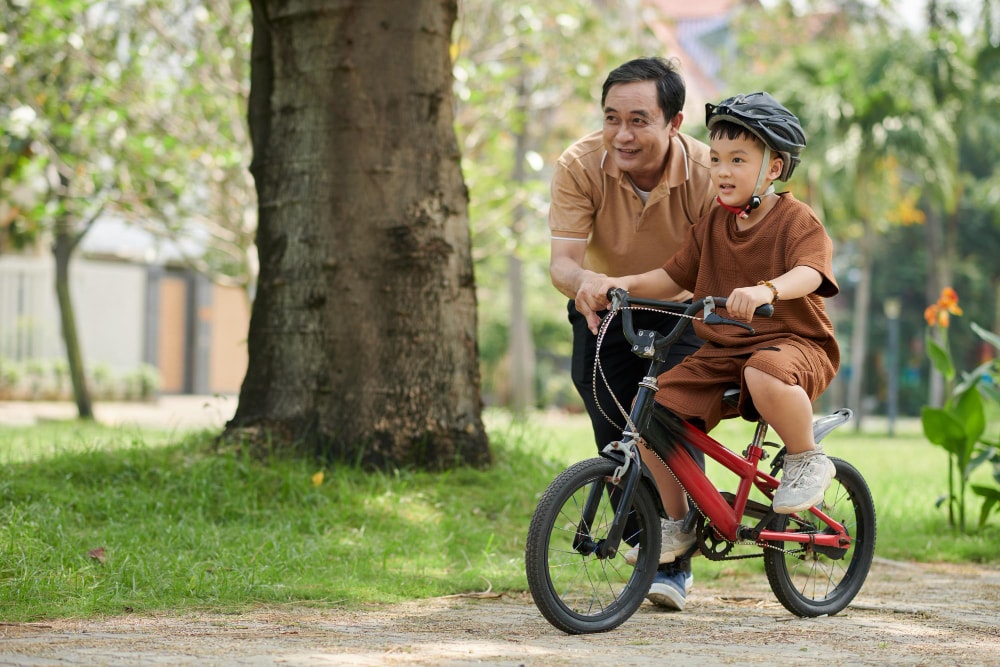
2. Start with a Balance Bike
For younger or less experienced riders, a balance bike (a pedal-less bike) is ideal for kids in earlier years. It helps kids learn balance and coordination before introducing pedals.
It may be a good idea to set up your child’s bike in the lowest setting at the beginning.
Let them walk forwards, glide, and eventually lift their feet to coast.
3. Find the Right Environment
Look for a safe, open space with a slight downhill slope and smooth surface for your child to ride their bike. The gentle incline helps build enough momentum to stay upright. A
void crowded or rocky areas, particularly if they haven’t mastered balancing on their bikes yet.
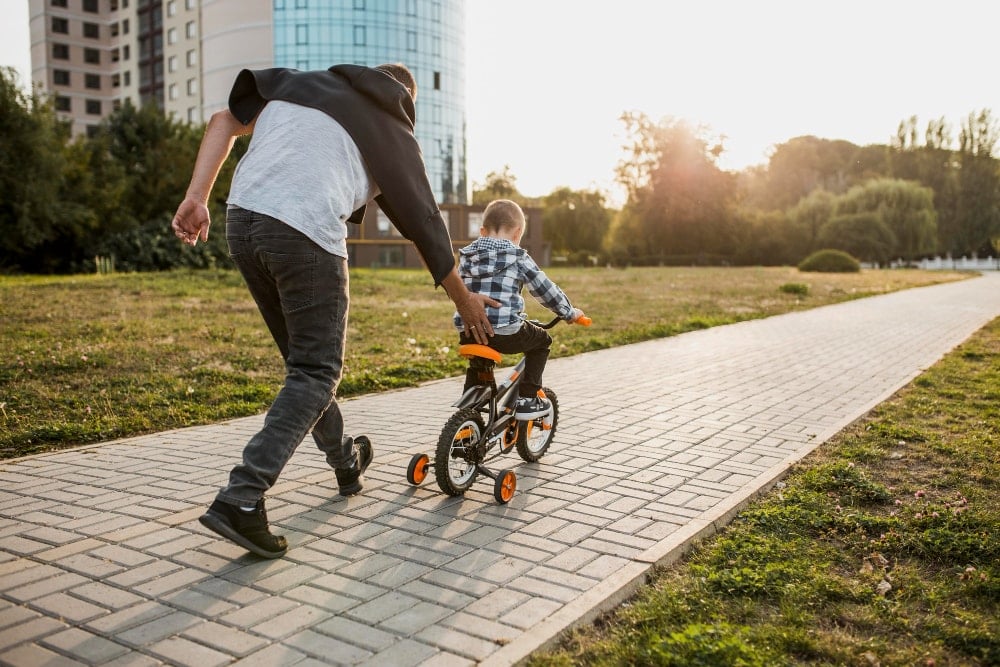
4. Teach the Basics Without Pedals First
If you’re using a pedal bike, remove the training wheels and pedals initially. Lower the seat post so your child can sit and comfortably reach the ground.
This lets your child walk the bike forward a few steps while keeping one foot on the ground. This simulates a balance bike experience.
Teach your child to coast by lifting their legs once they’re comfortable walking the bike. Most kids will naturally begin to glide and balance with practice.
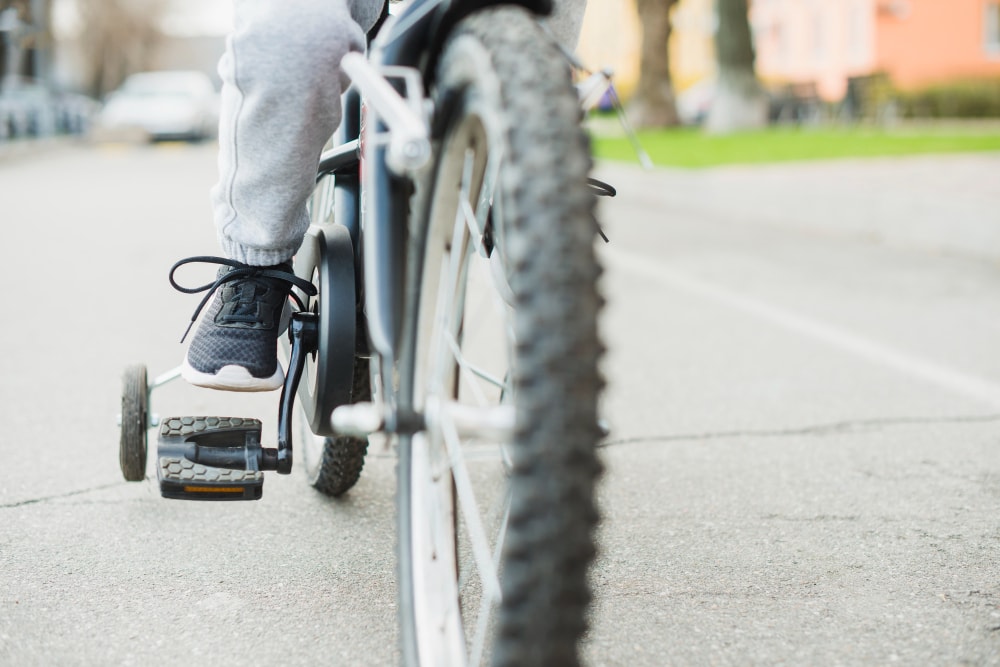
5. Introduce Pedals to Your Child’s Bike
Once your child’s weight is centered and they can glide smoothly, you can start with pedals. Reattach the crank arms and pedals.
Ensure the seat height is adjusted so your child’s feet can still touch the ground, though not necessarily flat.
Teach them to pedal by placing one foot on a raised pedal and pushing down to pedal forward, while the other foot pushes off the ground for momentum.
Once in motion, bring the other foot up to the other pedal to continue moving the bike forward.
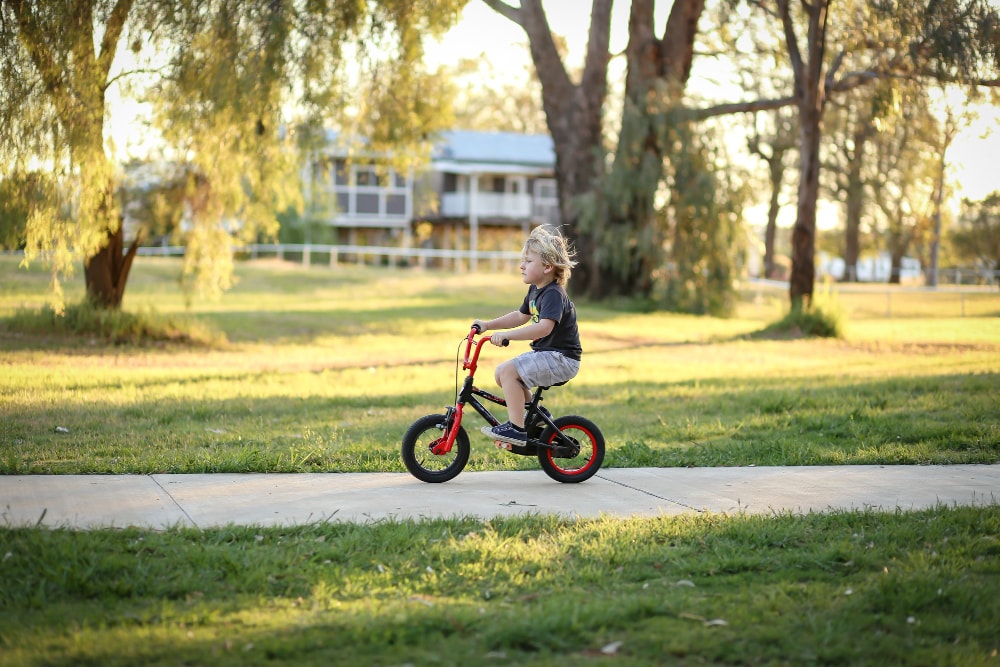
6. Gentle Push and Let Go
Offer a gentle push to help your child start if needed.
Avoid holding the handlebars or putting pressure on the pedals; instead, support them under the arms or lightly at the shoulders.
Let go once they gain balance and trust their ability to stay upright. Keep encouraging, not correcting.
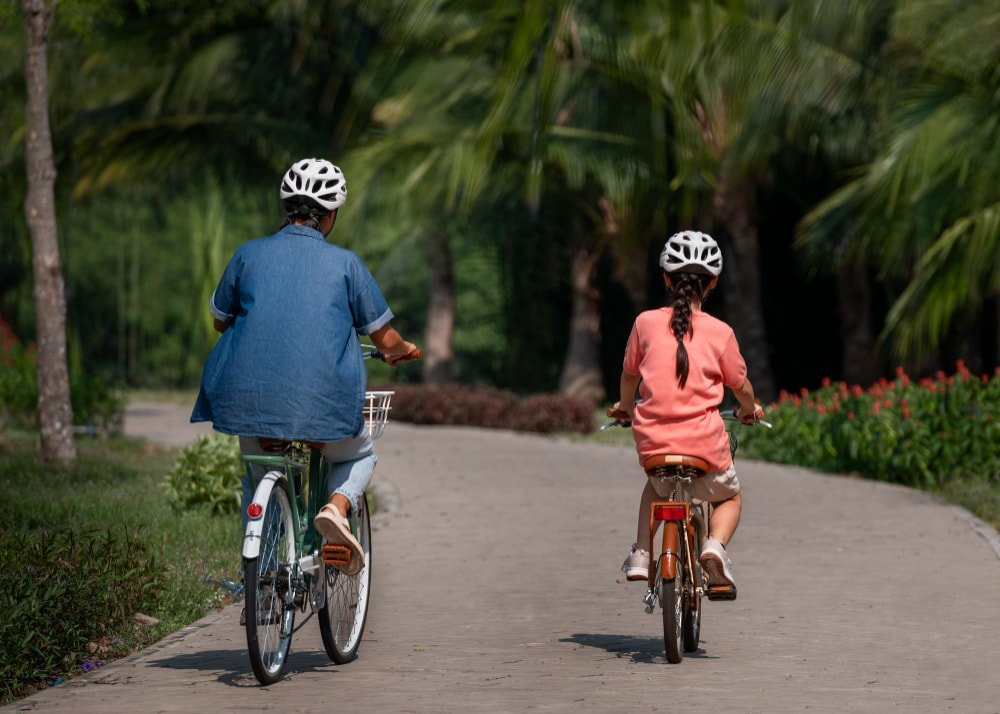
7. Practice, Practice, Practice
Have regular sessions where they can practice pedaling, turning in a straight line, and stopping using the brakes.
Keep sessions short and fun. Many kids respond better to frequent, playful practice than long, serious lessons. You can even make a habit of cycling weekly even after your child learns how to ride a bike.
Remind them to wear a bike helmet that fits snugly and sits level on their child’s head.
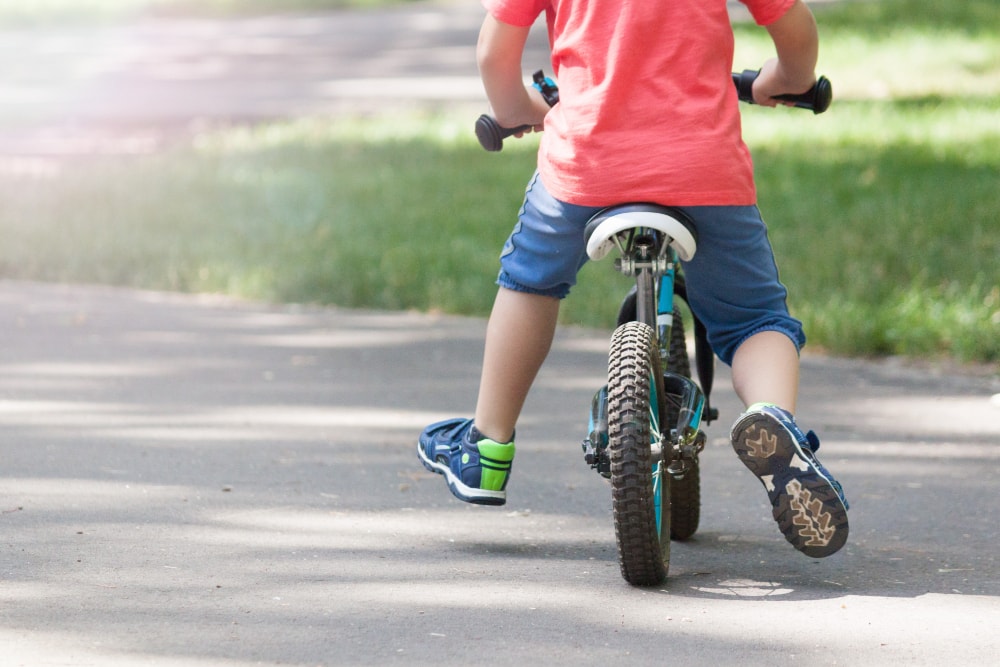
8. Progress Gradually
As they get more confident to ride a bike, guide them through turns, obstacle avoidance, and riding on various surfaces.
Praise every attempt and celebrate the small wins. Older children may progress quicker, but every child has a unique learning process.
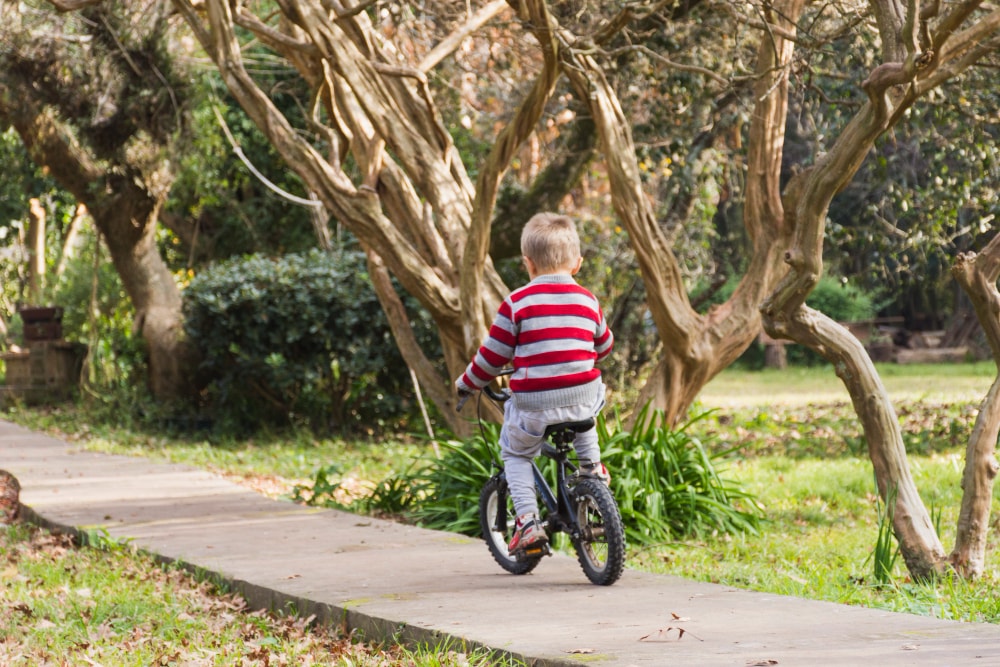
9. Graduating from Training Wheels
Though some parents still prefer to teach kids how to ride a bike with training wheels, experts suggest skipping them in favor of balance training. This method leads to faster progress.
If you do use training wheels, remove them and encourage using the pedals once your child shows balance and control. This makes transitioning to a pedal bike without training wheels independently smoother.
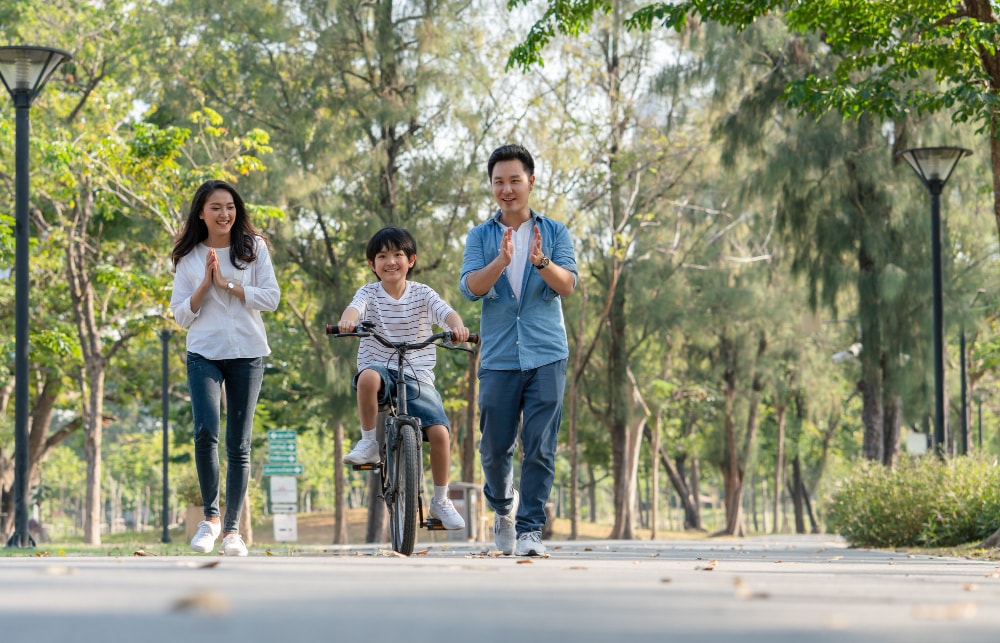
10. Celebrate Their First Solo Bike Ride
That first solo glide, pedal, and turn deserves celebration! Document the moment your child learns to bike independently. Cheer them on, and perhaps even let them pick out their own bike as a reward. This solidifies the achievement and encourages further riding.
Bonus Tips for Parents:
There’s no best age to teach your child to ride a bike—some start at 3 or 4, while older children might begin later.
If your kids learn slowly, be patient. Avoid pressure when you teach and turn it into a bonding experience.
Teach them about basic bike maintenance and safe stopping.
Always prioritize safety gear: bike helmet, closed shoes, and clothes appropriate for biking.
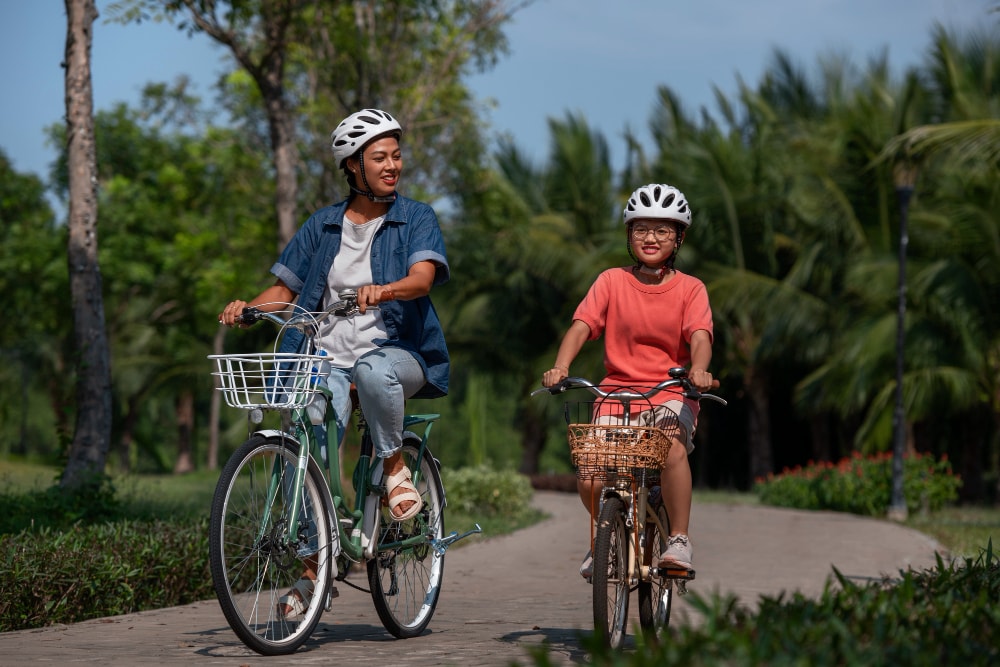
Ride Toward Confidence
Biking isn’t just about learning to ride and maneuver two wheels.
It’s about fostering trust, growth, and resilience in your child. When you teach your child to ride a bike, you’re guiding them through one of the earliest forms of independence—one pedal at a time.
It’s also vital for your child to learn how to ride a bike in a safe environment. At Camella, your child has more than enough space to learn to bike and eventually ride one independently.
Camella’s master-planned developments are designed with ample paths for bike use.
Camella communities are designed to promote movement and overall well-being, where kids can ride a bike safely within each neighborhood.
Whether you’re helping a toddler on a balance bike or encouraging a first grader to ride without training wheels, remember: the goal isn’t just to ride. Bike riding allows each child to gain confidence, bond with family and neighbors, and enjoy the journey together with you.
So grab those bikes, adjust the seat height, and head out to ride a bike.
